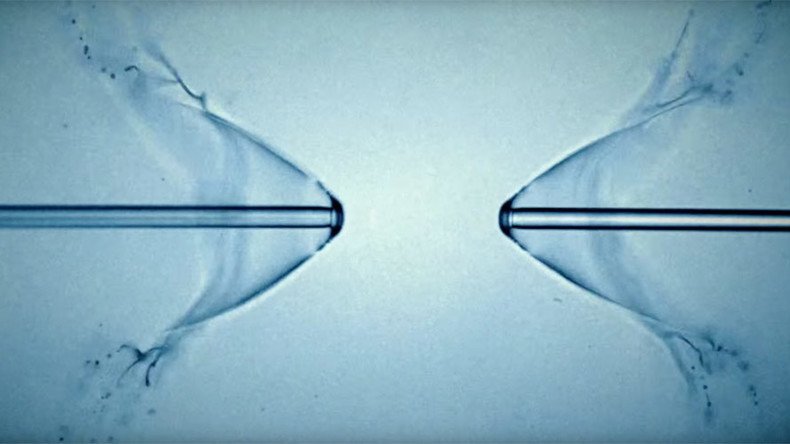World’s brightest laser blows apart liquids in super slow-mo (VIDEO)

These explosions might look like a 1990s music video but it’s actually a scientific breakthrough by researchers at Stanford University, who have recorded the first clips of liquids being vaporized by the world’s most powerful X-ray laser.
The Linac Coherent Light Source, a highly focused beam at the university’s SLAC National Accelerator Laboratory, has helped researchers examine the makeup of nanocrystals and study minute chemical reactions.
According to the laboratory’s website, the laser beam is “a billion times brighter than previous X-ray sources” and now scientists are using it to see what happens when the world’s brightest beam is fired at liquids.
The results are quite mesmerizing, with droplets being blasted apart. Besides producing very cool visuals, scientists say the study can help understand how liquid samples can be distorted or destroyed by radiation rays during experiments.
“Understanding the dynamics of these explosions will allow us to avoid their unwanted effects on samples,” said Claudiu Stan of the Stanford Pulse Institute.
“It could also help us find new ways of using explosions caused by X-rays to trigger changes in samples and study matter under extreme conditions.
“These studies could help us better understand a wide ranger of phenomena in X-ray science and other applications.”
The footage also reveals the sheer power of X-ray pulses as holes are punched through jets of liquid.
Researchers made the incredibly detailed footage by recording X-ray blasts hitting liquids, catching the impact at mere millionths and billionths of a second.
The images were then strung together to make a moving compilation of explosions and shockwaves.
“Thanks to a special imaging system developed for this purpose, we were able to record these movies for the first time,” said study co-author Sébastien Boutet.
“We used an ultrafast optical laser like a strobe light to illuminate the explosion, and made images with a high-resolution microscope that is suitable for use in the vacuum chamber where the X-rays hit the samples.”
The data derived from the ‘ultra-intense’ X-ray experiment has been published in Nature Physics.












